Iga's Mibuno Castle
Like the Shadow Warriors of Iga, Mibuno Castle has a Few Mysteries of its Own.
Mibuno Castle, also known as Shimizu Castle, is a 16th century Warring States period fortress believed to have been built by Shimizu Iwashiro no Kami. Mibuno is a hirayamajiro (hill and plains type castle) on a small plateau at a relative height of 20 meters located in Iga Ueno City’s Fukada, Kawahigashi region. It was the site of a fierce battle between the local militia — often called shinobi, but perhaps better understood as ninja — and the invading Oda troops in October of 1581.
Now registered as a Japan Heritage site, Mibuno was attacked during the second Tensho Iga War by Oda Nobukatsu the second son of Oda Nobunaga. The villagers and warriors of the local villages, Iga Mibunogo, Aidamura, and Midaimura are said to have gathered at Mibuno Castle, which then became the stage for the fierce Battle of Mibuno Miyagawa against the Oda forces. Despite the efforts of the guerilla forces of Iga, they were overwhelmed by Oda troop numbers, and most were killed. Mibuno fell and was captured by Oda allied Takigawa Kazumasu but was abandoned not long after after that.
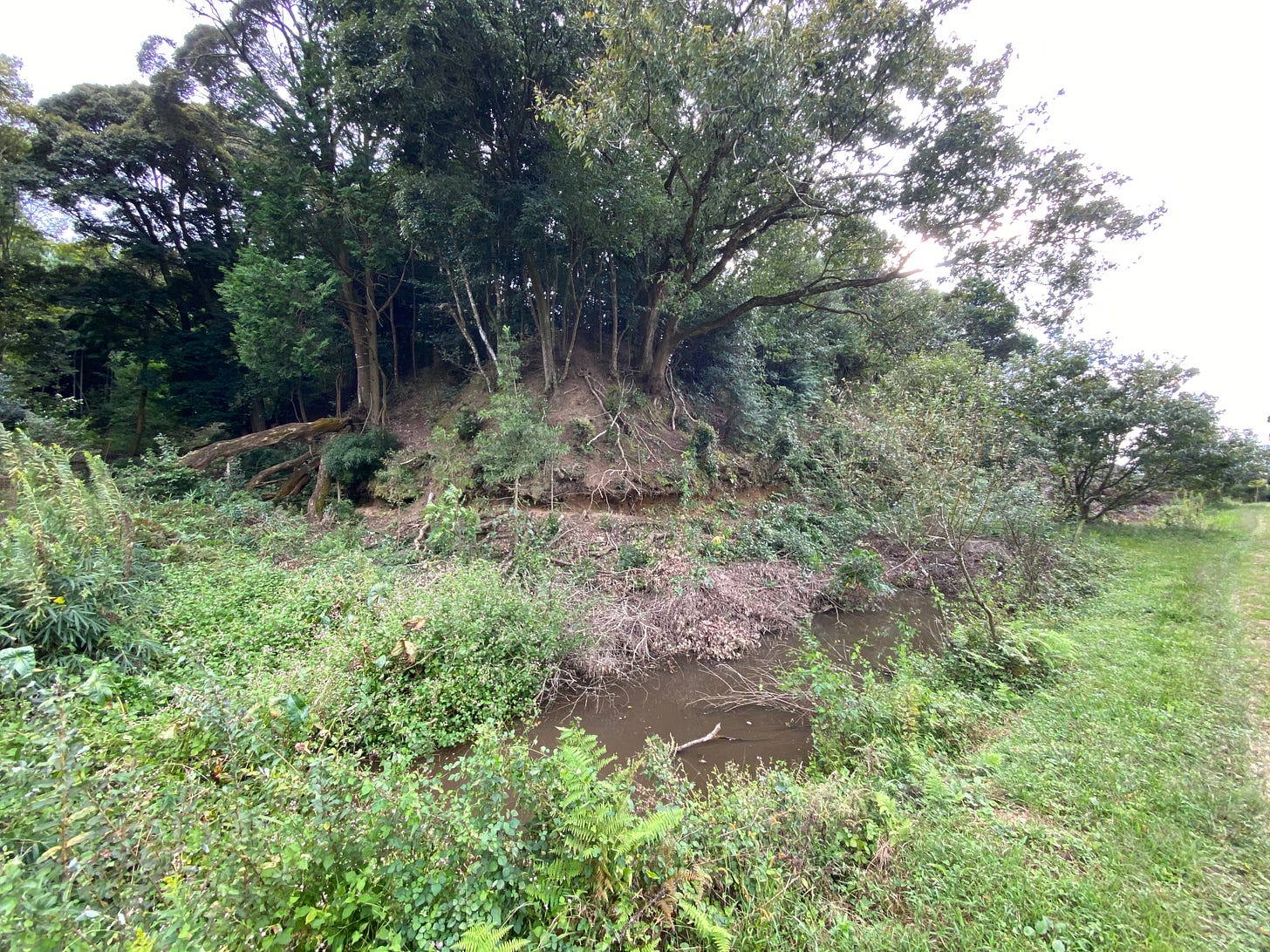
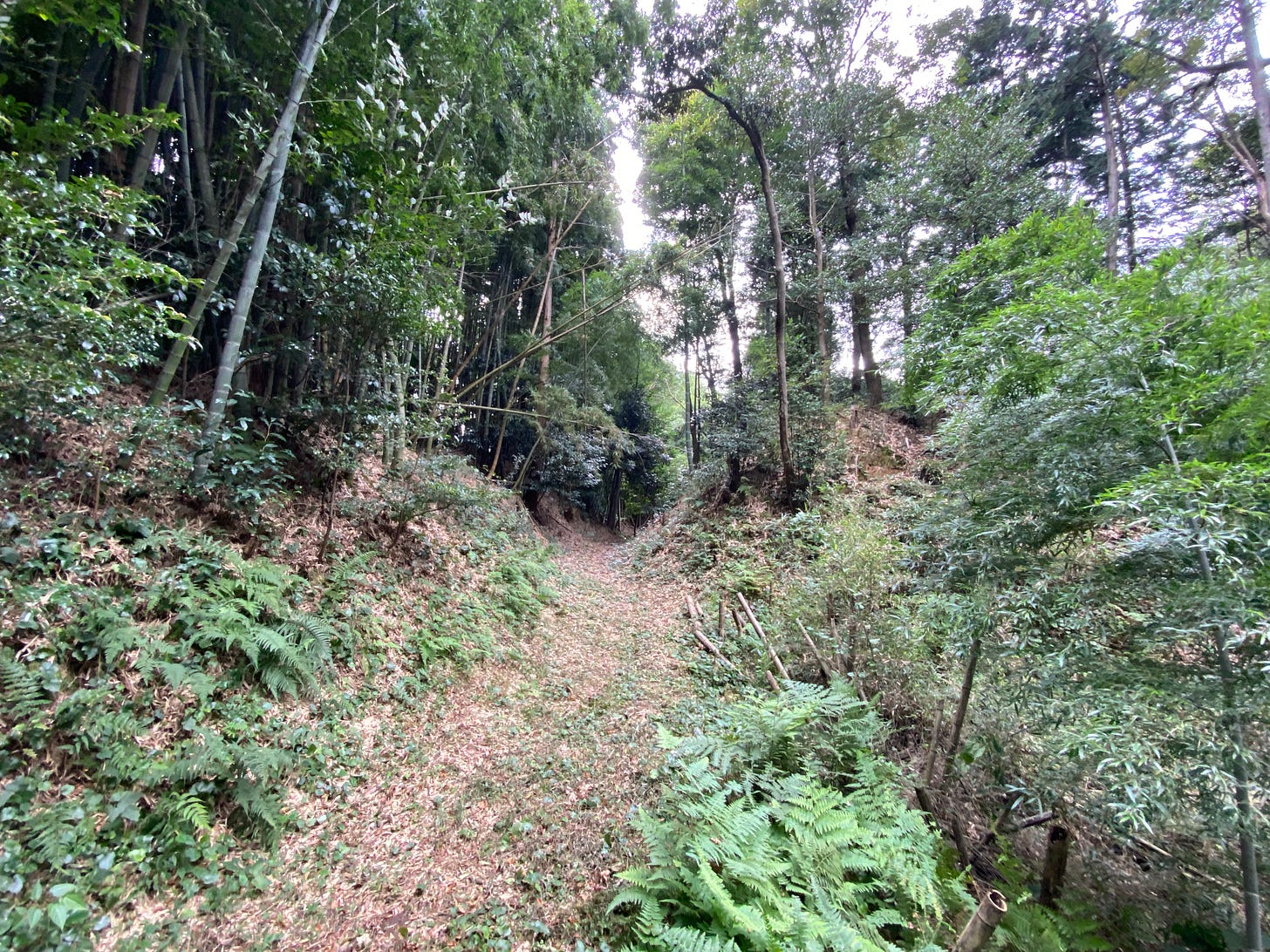
There are over 13 small castles scattered about the Kawahigashi area, with Mibuno Castle being the largest of them. The second largest, Maruyama Castle is only 200 meters southeast, the fortified Mine residence directly south, and 300 meters westerly, the remains of the Iota clan fortified residence being the better known. This is an extremely rare situation in Japan to find so many medieval castles coexisting in such close proximity. So too the fact that during the Sengoku period, Iga Province was unique in that it had no single powerful Sengoku Daimyo figure. It is believed the region did not want to be ruled by any single person of power. There was a strong sense of independence, and characteristics that nurtured the shinobi warriors, and so the region was dotted by many small square castles surrounded by earthworks. Each castle was independent and the home of a minor lord with limited military power. However, they were united around the Kasuga Shrine as their collective core.
Like the warriors of Iga, Mibuno Castle has a few mysteries of its own. Built at the tip of a low hill extending from the east of Kasugayama, with the Taki River flowing to the west and the smaller Miya River to the north serving as natural moats, and further protected by the many rice paddies across the surrounding lowlands, Mibuno was well positioned, with good visibility in all directions. Attacks on the castle would have come from a north, northeasterly direction, and the layout supports this.


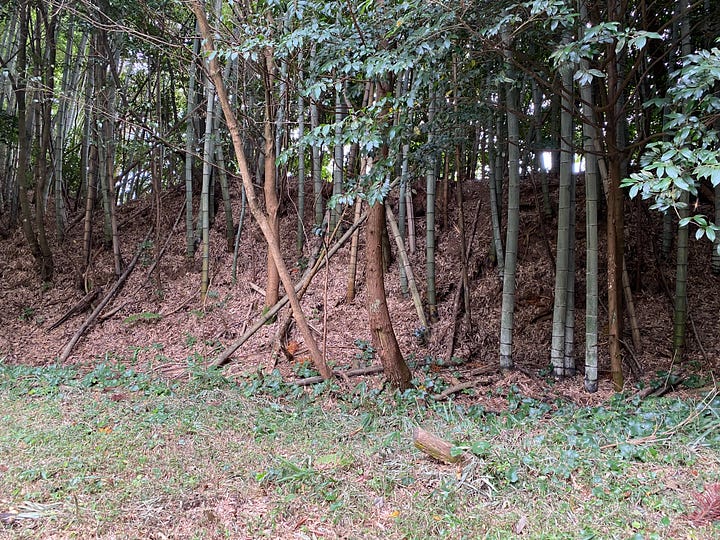
The remains include earthworks, consisting of a large koguchi gateway, dry moats, water moat, and the possible site of a turret or noroshi smoke flare pit. Like many other such castles in the Iga region, the main kuruwa (compound) is a square shape measuring around 90m east to west by 90m north to south and was surrounded by earthworks and deep V-shaped moats. One moat was created by digging into the hill on the west side of Kawahigashi. To the north is a large 70 by 50-meter field, believed to have been a possible external bailey. Between that and the main castle complex is an L-shaped mizubori (water moat) surrounding the north and eastern sides. The main sections’ koguchi entrance is on the lower southeastern corner.
On the northwestern corner is a slightly thicker segment of dorui. This is slightly hollowed out with a 60cm deep, 2-meter diameter dish-like pit, and it has been suggested that it may have been the noroshi-dai, or smoke flare firing position. On the opposite side of the castle are possibly the remains of a small watch tower-like structure base on the southeastern corner.
One of the most fascinating and mysterious points of interest regarding this castle are the two to four-meter high, thick dorui earthen walls surrounding it. Most Sengoku period castles have these earthen embankments made from the earth dug from the moats below and piled up and compacted to an even height to form the flat topped surrounding protective walls, however Mibuno castle’s dorui feature evenly spaced large V-shaped depressions along the top of the earthworks, — almost like battlements. Exactly what these rare V-shaped spaces were for, remains unknown, although speculation includes “stone dropping” and teppo matchlock firing spaces. Yet another theory is that once the castle had been captured, the V-shaped cuts were made in the walls to signify it’s fall. If that was the case, why take the time and effort to do this, and why is this unique to Mibuno?
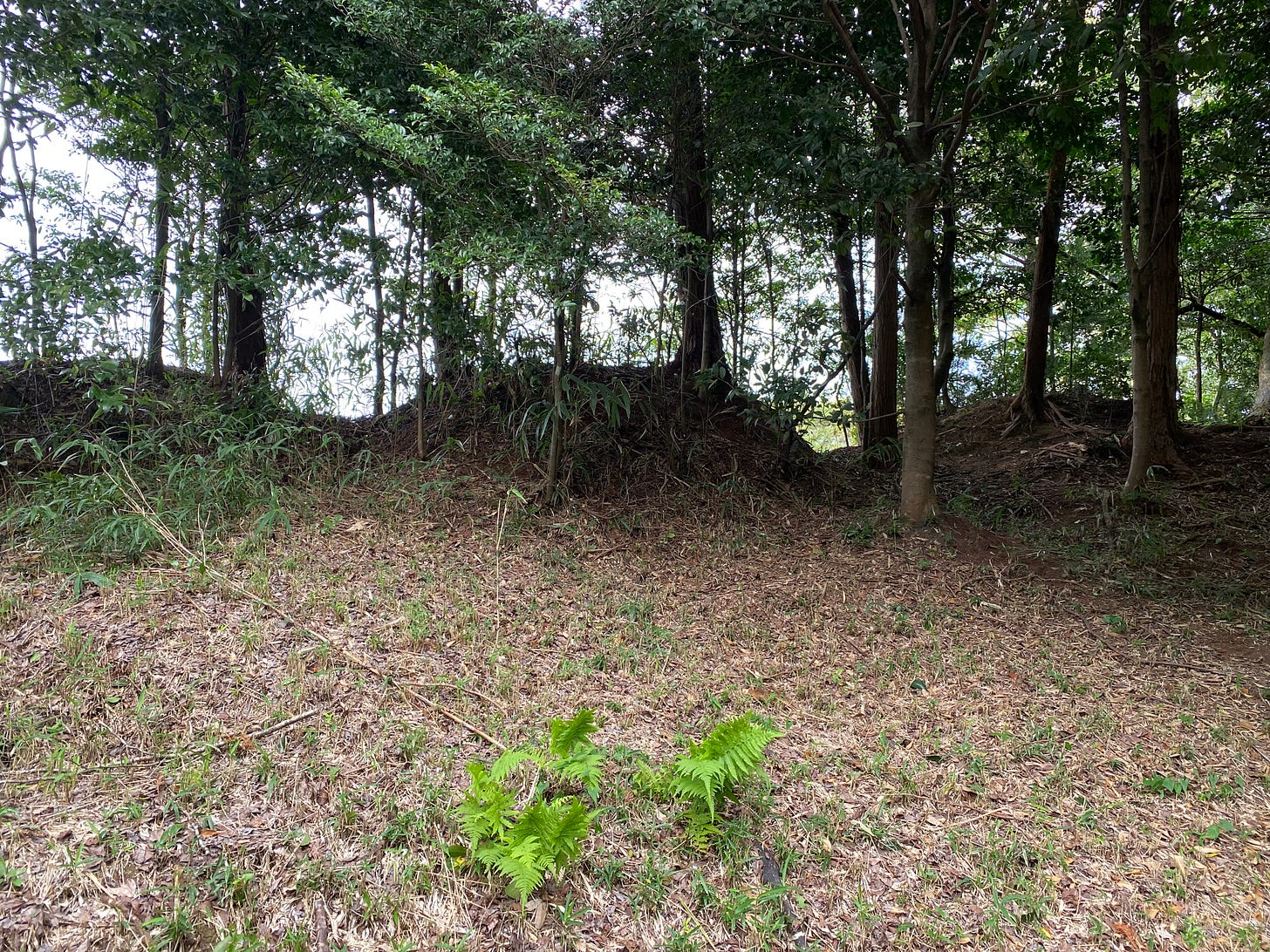
My own thoughts are that there may have been low wooden shield-like walls along the upper, outer edges of the embankments to allow firing positions for gunners and particularly archers with their longer bows standing in the sunken sections to remain partially covered but forward enough so as not to be hindered by the walling. Again, this is only my speculation.
It is believed that the old gravestones currently scattered around the western foot of the castle are those of the warriors of Iga who fought and died in the battle at that time.
Mibuno Castle is currently undergoing preservation works by the Iga Ueno City Culture and History division.




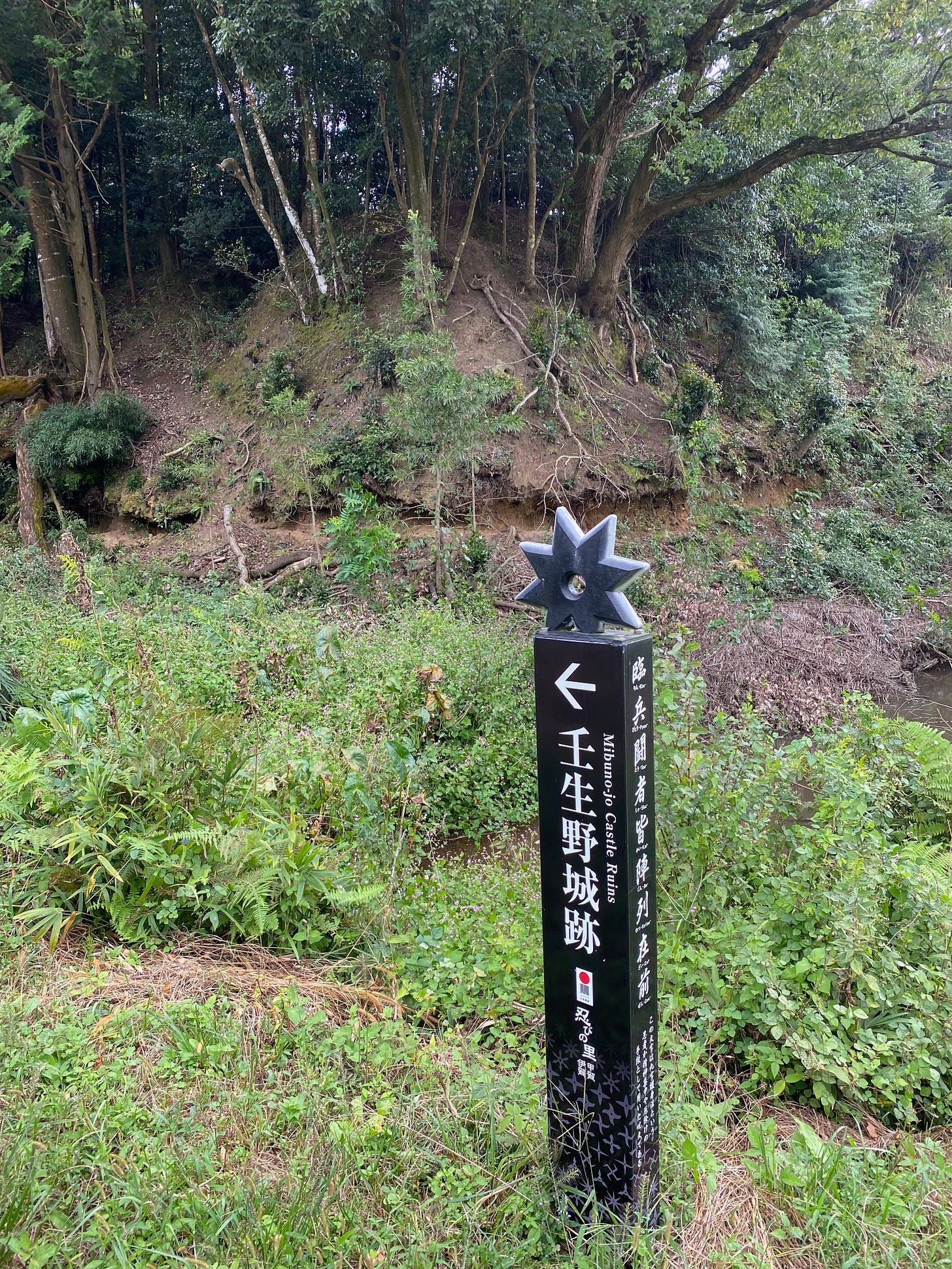

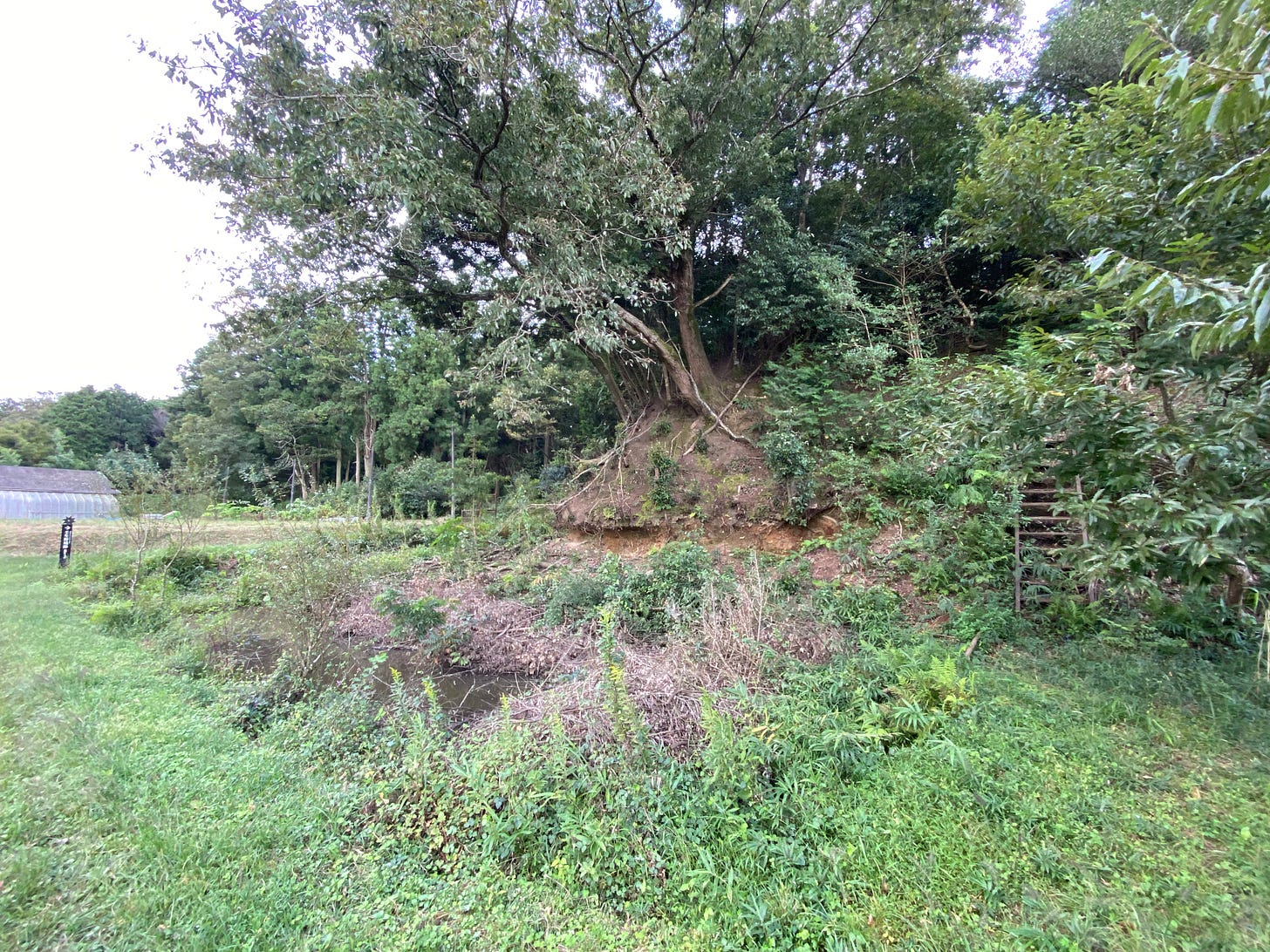
Chris-san, Is this former castle in a hill? I was looking through Google Map, is next to a park.
This article is great! It took me back to the castle in my mind! There really is a lot of interest surrounding Nobunaga's campaign against the Iga region and the Tensho Iga battles of 1579 and 1581. I'm really excited by this article and everything related to it. Thanks Chris-san!